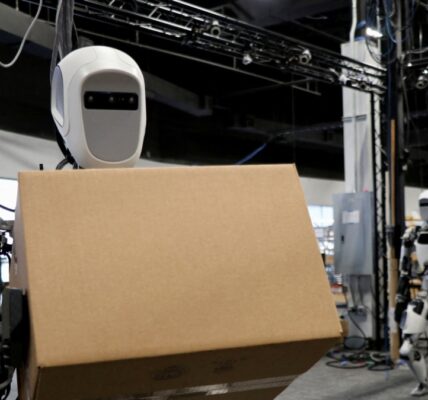Australia uses space tracking technology to keep an eye on and control the populations of feral buffalo herds.
Rangers from indigenous communities in northern Australia have begun utilizing satellite technology to manage populations of feral animals. This ambitious initiative, known as the Space Cows project, involves tagging and monitoring 1000 wild cattle and buffalo.
In the 1800s, water buffalo were brought into the Northern Territory of Australia for use as labor and as a food source for isolated communities. When these settlements were deserted, the buffalo were set free to roam in the wild.
The population of feral buffaloes has increased, resulting in significant harm to the environment. They navigate through wetlands using swim channels, which has disrupted the balance of salt and freshwater, causing damage to paperbark forests, waterholes, and the spread of invasive plants.
The Space Cows program involves capturing wild cattle and buffaloes using helicopters, securing them to trees, and equipping them with solar-powered tags that can be monitored via satellite.
Researchers claim that the up-to-date information will play a crucial role in monitoring and anticipating the behavior of the wild herds, known for causing damage to the environment.
A majority of wild buffalo can be located on indigenous territories, and scientists are collaborating with Indigenous park rangers. Occasional removal of buffalo is conducted, and there is optimism that First Nations groups can gain financial advantages from properly controlled wild herds.
This technology will enable Indigenous rangers to anticipate the movements of cattle and buffalo, giving them the ability to either cull the animals or erect barriers around important cultural or environmental locations. The collected data will assist rangers in preventing the animals from damaging sacred ceremonial areas and culturally significant waterways. According to scientists, the satellite data will allow for predictions of when herds may migrate to specific waterways during warm weather, allowing rangers to take action.
In the past few years, numerous untamed buffalo have been transported from Australia to Southeast Asia.
Andrew Hoskins is a scientist who specializes in biology at CSIRO, the national science agency for Australia known as the Commonwealth Scientific and Industrial Research Organization.
According to the AM Program on the Australian Broadcasting Corp, this marks the initial instance of tracking feral animals using satellite technology.
Hoskins stated that the current tracking project is one of the largest in terms of wildlife or buffalo tracking. The unique aspect is the integration with a space-based satellite system.
Australia has had an often-disastrous experience with bringing in animals from overseas since European colonization in the later 1800s. It is not just buffaloes that cause immense environmental damage.
The introduction of cane toads into the country in the 1930s as a means of pest control for sugar cane plantations has resulted in a large population of these creatures who are known for their high rates of reproduction and voracious appetite. They are known to pose a threat to native insects, frogs, reptiles, and other small animals, as their skin contains a poisonous toxin that can also be fatal to native predators.
Millions of birds in Australia are killed annually by feral cats, and other animals such as foxes, pigs, and camels cause significant ecological harm throughout the country.
The yellow crazy ants are considered to be among the most destructive invasive species globally. Experts speculate that they were unintentionally transported to Australia through ports. They have been observed in the states of Queensland and New South Wales, as well as the Northern Territory. These ants are extremely hostile and secrete a corrosive formic acid that can cause severe burns on their victims, such as small mammals, baby turtles, and bird hatchlings.
Source: voanews.com



